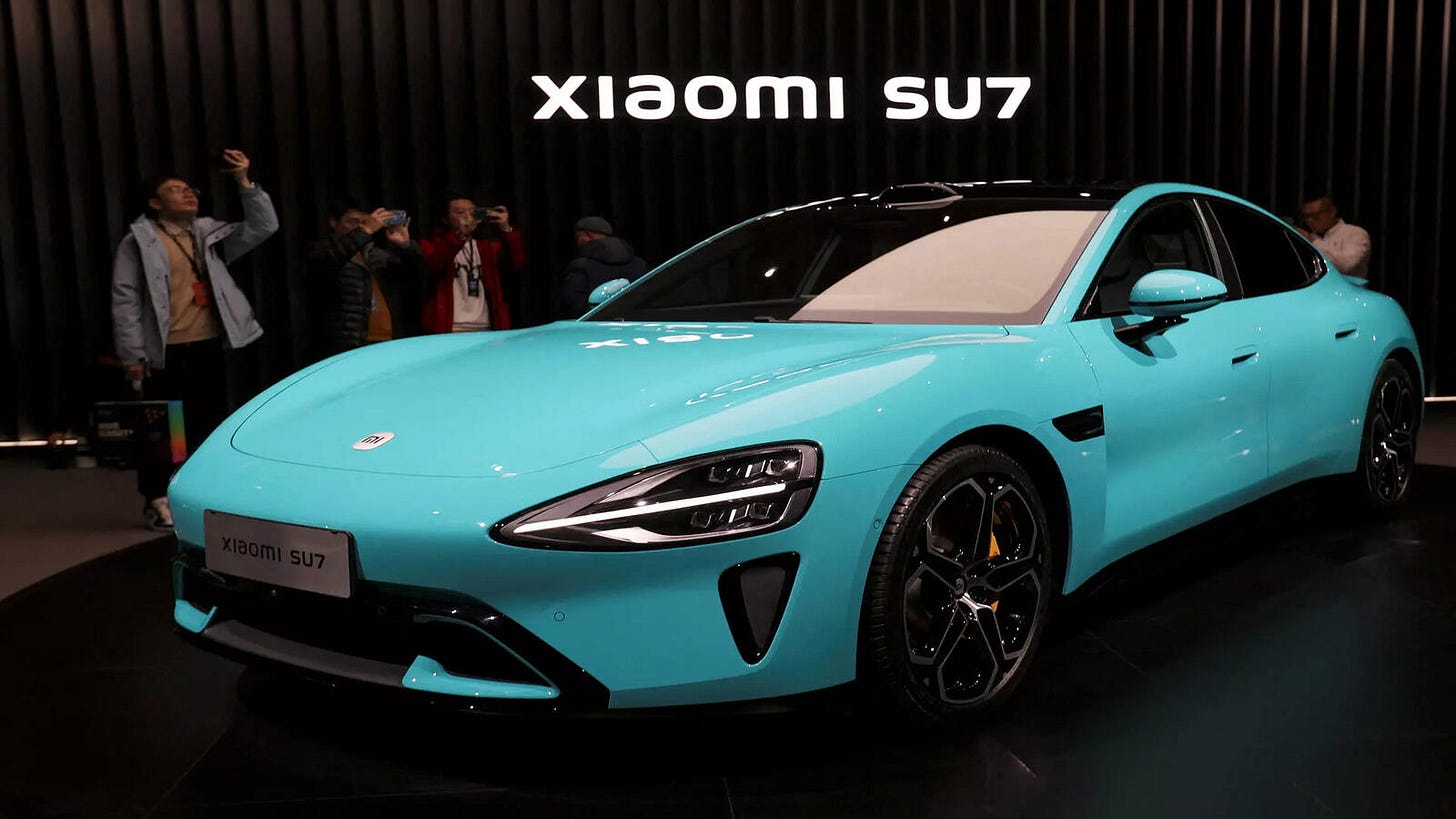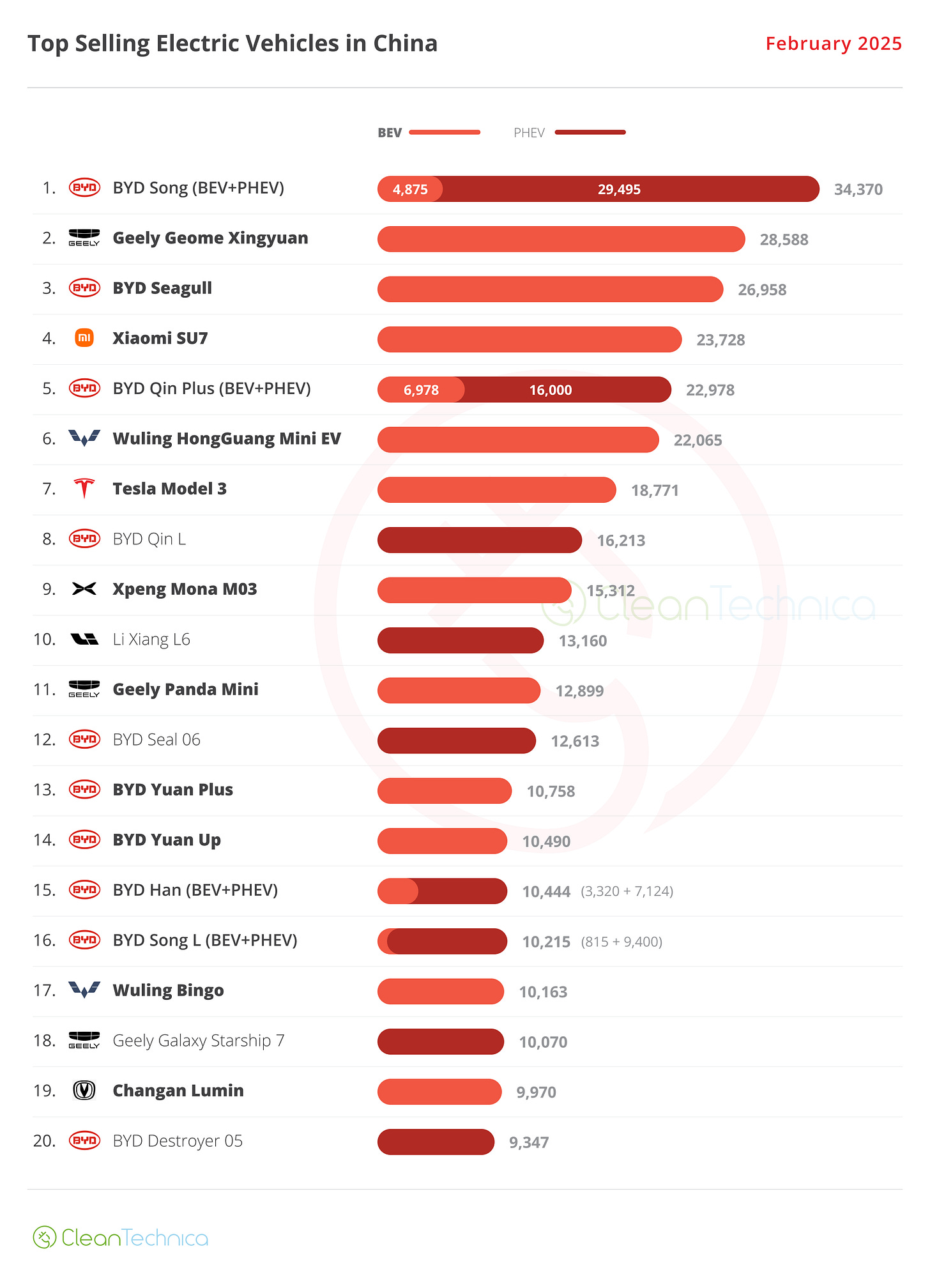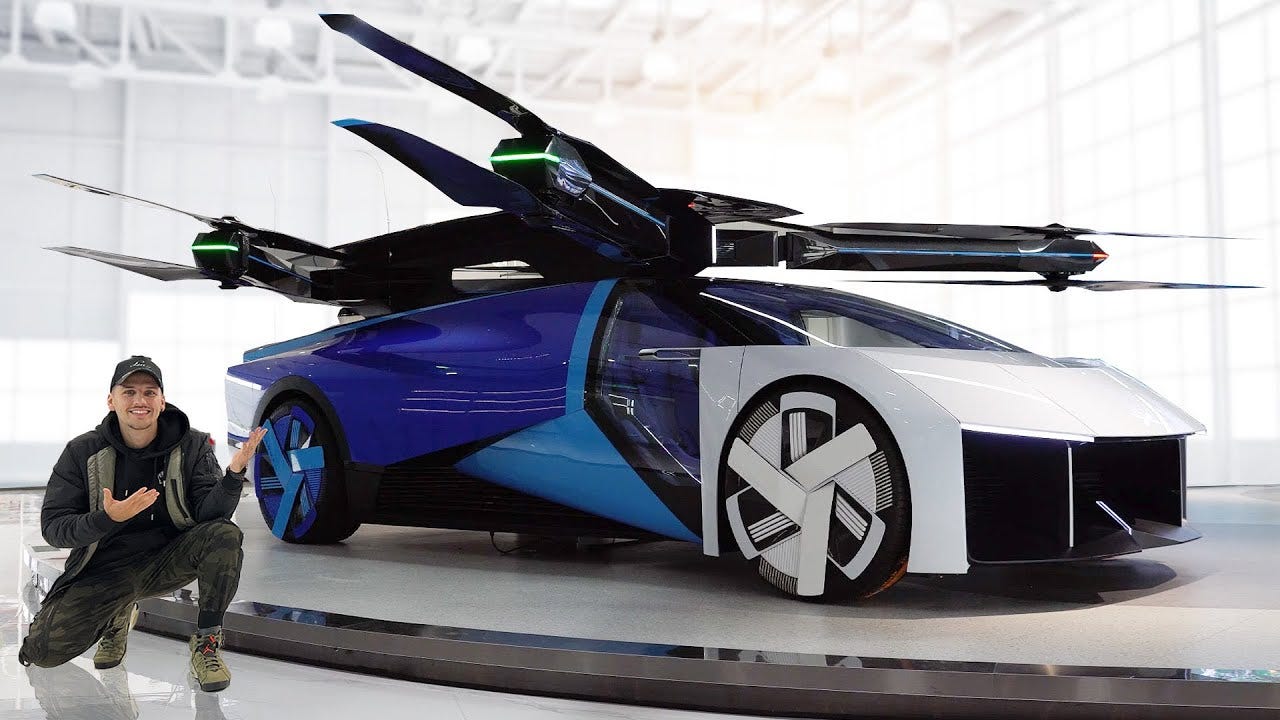Chinese EV Makers' Foray into AI: Redefining the Future of Mobility
Who are the major players, why have they become market leaders, and how do we move forward together as a society?
Welcome Back,
To understand and track the future of AI, we’ll need to keep an eye on China.
One of the big questions I’ve had in the past few months is how can China’s lead of EV makers translate to a very competitive group of humanoid robotics makers and startups pushing the future of mobility. Could some of their avant-garde “flying cars” contribute to the future of mobility? What will China’s EV makers become in 5-10 years?
Chinese EV makers aren’t just car makers, they are innovation hubs. Today we’ll explore many examples of this.
I asked
and to look into this complicated situation pre 2025 China trade war.Grace Shao is an independent researcher who writes about AI, Physical AI, and AI infrastructure on Substack at AI Proem.
Diana Wolf Torres transforms complex AI technology concepts into clear, compelling narratives that resonate with broad audiences. As the founder of Deep Learning with the Wolf and a veteran technology communicator with over two decades of experience.
In this article we’ll delve into China’s EV makers, physical AI, the future of mobility and everything from smart homes to robotics in China. We’ll take a look at the R&D inside of China’s EV makers taking a holistic snapshot.
BYD vs. Tesla update April, 2025
🌍 China’s BYD has a lot more momentum than Tesla in the EV race in recent months:
Earlier this month (April, 2025) Tesla reported a 20% drop in auto revenue with Net income plummeting 71%.
A few days ago, BYD reported operating revenues that have jumped 37% year-over-year to 170.4 billion yuan, or roughly $23.3 billion.
In late 2024 we learned that BYD was conducting a new mass recruitment drive for robotics talent to staff its embodied intelligence (EI) unit.
Keep in this in your mind as we proceed in this very well researched deep dive. Also read the deep dive
did with us about BYD.🔮 Recent articles on AI Proem
We often have Grace talk to us about China Tech and China AI and its various ramifications, including physical AI.
[Audio+Video] The Big Technology Podcast: China's AI Strategy (🎬 YouTube Here)
AI Arms Race Far From Over: Chips is Only Half the Game, Infrastructure is the Other
Behind the AI Arms Race: U.S. vs. China Cloud Computing
🤖 Diana Wolf Articles
Diana is our lead robotics reporter:
The Robots are coming: Genesis
Global Robotics Landscape 2025
Reflections from GTC 2025: Robots, Recovery, and the Road Ahead
There are so many EV makers, EV battery leaders and EV borderline robotics makers in China already in 2025. A recent event where various Chinese humanoid robots participated in a half-marathon in Beijing that surprised some analysts.
China’s EV makers are poised not only to increase global sales in 2025 and take marketshare from Tesla and others amid Elon Musk boycotts and problematic reciprocal trade tariffs by the Trump Administration but build new capabilities the car makers in the U.S., South Korea or Japan are not known for.
China’s Variety of EV makers means a pivot to Robots is in the Cards
⚡ China’s EV Makers are Evolving
Here are some names to watch:
BYD
Geely
Xiaomi (SU7 pictured above).
Xpeng
SAIC-GM-Wuling
Li Auto
Zeekr
Nio + so many others (we’ll be covering many of these below).
Alibaba backed Xpeng have been Working on Flying Cars for Years via Xpeng AeroHT, an affiliate of Xpeng.
Now that you are orientated, let’s get into the deep dive that’s nearly 4,000 words.
Chinese EV Makers' Foray into AI: Redefining the Future of Mobility
Who are the major players, why have they become market leaders, and how do we move forward together as a society?
By Diana Wolf Torres, Grace Shao (Early, 2025)
The Chinese electric vehicle (EV) market is no longer just about battery power and range. Leading players like Li Auto, XPeng, Nio, BYD, and Zeekr are increasingly incorporating artificial intelligence (AI) into their vehicles and overall business strategies, effectively repositioning themselves as AI-driven companies. This shift is driven by the growing demand for intelligent features, the rapid advancements in AI technology, and the ambition to lead the future of mobility.
After a slow start to the year of the Snake, they all gave consumers incentives to convert and commit. But things changed with DeepSeek’s R1 release. All of a sudden, China seemed “investible” again after a long hiatus. International and domestic confidence was boosted by China's clear innovation and the founder’s largely optimistic and idealist views of focusing on innovation over commercialization, rallying young talents to keep believing in the process.
In fact, according to Rest of World’s reporting, more than 20 Chinese automobile brands have announced plans to embed DeepSeek models, supercharging the AI transition. Much of the adoption remains on the consumer-facing end, such as improving existing AI features, including voice control, high-precision mapping, and smartphone-like access to music, web search, and messaging services.
The Chinese EV industry will benefit as DeepSeek elevates the consumer experience of its products, making its cars even more attractive globally. China is already competitive in the EV manufacturing chain, including the production of lithium batteries and robotics, Grace Shao, founder of AI-industry newsletter AI Proem, told Rest of World.
“Chinese EV market leaders have all their ducks in a row, and now DeepSeek is accessible to them, perfectly positioning them to excel as the various components come together along the supply chain,” Shao said.
Why Have Chinese EVs Done Well?
Let’s first take a step back. China's dominance in smart electric vehicles has taken two decades of innovation and reiteration. It isn't merely a story of manufacturing prowess (which sometimes people like to point fingers at) but rather a strategic government-encouraged technological coup years in the making.
The world's second-largest economy has masterfully leveraged its unique advantages: a vast network of industrial clusters that can source any component within hours, control critical raw materials like lithium and rare earth elements, and an unmatched charging infrastructure network of over 10.2 million stations. But before that, China has also rolled out various top-down policies to encourage the development of lithium batteries, lidar sensors technology, robotics, push for electrification of things, and mandate the transition to greener energy solutions. All of that is on top of the founding of domestic OEM makers. With years of experience producing automobiles under the JV brands of leading European carmakers such as Audi, Mercedes, and so on, a generation of car designers, makers, and engineers were trained. With lowered costs, Chinese OEMs such as SAIC, BAIC Dongfeng, and Changan dominated the lower price range of cars for middle-class households. Grace has written an analysis of the impact of governmental support and “real economy” innovation that have propelled China’s EV and robotic sector here.
This ecosystem has enabled Chinese automakers to iterate new models at breakneck speed—every 1.3 years compared to traditional automakers' four-year cycles—while maintaining tight control over costs and innovation. These moving parts laid the foundation for a nutrient-rich environment for Chinese smart EVs to grow in their initial stages.
What truly sets Chinese EVs apart is their evolution beyond simple transportation into sophisticated mobile computing platforms. In a fiercely competitive market and a mobile-native user demographic, companies have been forced to cater to tech-savvy Chinese consumers who demand advanced features like autonomous driving and "smart" cockpits.
These smart cockpits are integrated systems that combine cutting-edge digital displays, AI-powered controls, and advanced connectivity features to enhance the driving experience and safety. This pressure, combined with substantial government support and cross-industry collaboration between tech giants, automakers, and research institutions, has created a perfect storm of innovation.
The result is a new generation of vehicles that seamlessly integrate artificial intelligence, entertainment systems, and transportation functionality—making Chinese EVs not just cars but rolling smartphones that have left traditional automakers scrambling to catch up.
Geopolitical Complications
Keep reading with a 7-day free trial
Subscribe to AI Supremacy to keep reading this post and get 7 days of free access to the full post archives.








